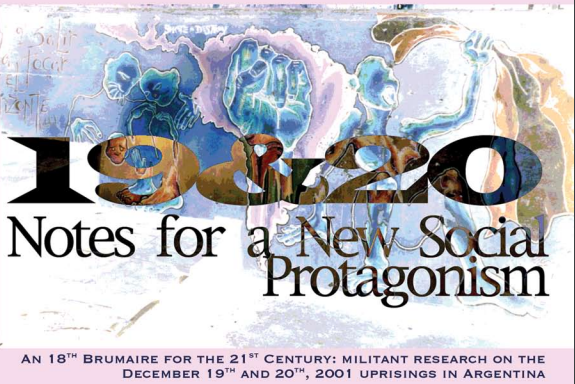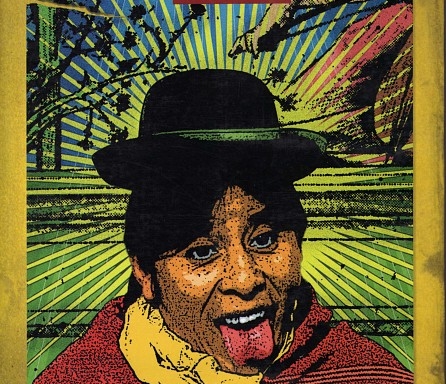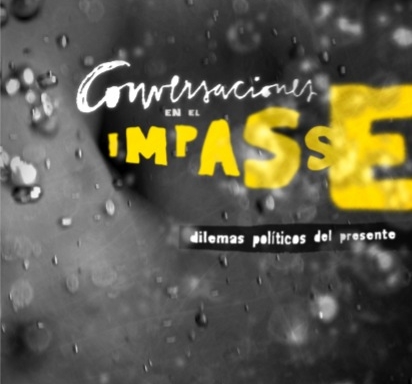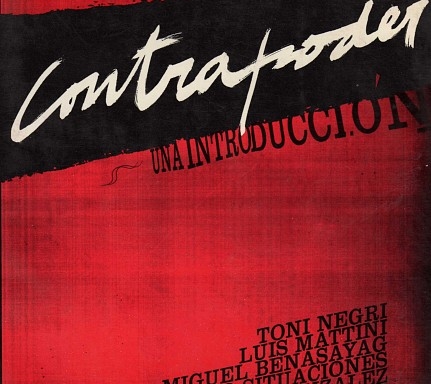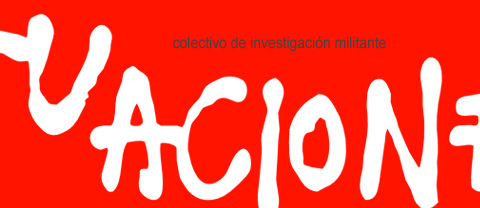Translators’ Introduction
Que se vayan todos! Four Spanish words became part of the universal language of rebellion after a multitude of Argentineans occupied the streets the evening of December 19th 2001. The words were thrown at every politician, functionary, economist, journalist and at nobody in particular, cutting a threshold in history, a before and an after for Argentina that would find a wave of resonances around the world.
The revolt surprised analysts, always ready to judge the new with reference to their old interpretive grids. But for many of its protagonists, however, it had long been foretold. Argentina had been one of the testing grounds for neoliberalism since 1975, shortly before a dictatorship, initially commanded by General Jorge Videla, institutionalized the forms of repression of revolutionary activism that were already under way, while launching a package of reforms that began undoing the labour rights and welfare state policies that had been the result of decades of workers’ struggles.
Eight years later electoral democracy finally returned. The consequences of the repression became visible as the military’s large-scale process of social engineering had been successful in demobilizing the population. Neoliberal reforms could now be imposed by consensus. In the 1990s, president Carlos Menem and his finance minister, Domingo Cavallo, in alliance with the labour bureaucracy, undertook sweeping structural adjustment reforms, privatizing nearly every state-run company at every level of government, deregulating labour and finance markets, pegging the peso to the dollar, and leaving nearly fourty percent of the population unemployed or underemployed.
During the Menem era, a new generation of activists and new forms of protest slowly emerged. H.I.J.O.S., the organization of the children of the disappeared, came about in 1995 and introduced creative ways of denouncing the unpunished torturers of their often-revolutionary parents and preserving their memory. In 1997, unemployed workers began to protest blocking roads. Their multiple movements, known as piqueteros, spread throughout the country very quickly. All the attempts of the Peronist government to co-opt the movement proved unsuccessful. To find alterantives to the recession, barter clubs were created in different points of the country, giving rise to a massive underground economy based on solidarity principles.
In 1999 Fenando de la Rúa became president with a promise of change, but kept the neoliberal reforms intact in the name of preserving “governability.” When the national economy came to the verge of collapse, after having tried different plans to keep paying installments on the (now massive) foreign debt on time, de la Rúa recruited Cavallo.
After July 2001 the pace of events became dizzying. The numerous piquetero movements, which so far had acted mostly in isolation, started coordinating entire days of roadblocks throughout the vast Argentine geography. In the mid-term elections of October 2001 voters massively submitted spoiled ballots, with percentages of abstinence never seen before. In November, Cavallo froze withdrawals from bank accounts to prevent a drainage of reserves that would force the government to abandon the peg between the dollar and the peso. People from all walks of life suddenly found themselves without money for the most basic needs. Almost overnight, thousands of retail businesses were left without customers.
The article that follows captures with vivid eloquence the street actions of December 19th and 20th, 2001, exposing, at the same time, the inadequacy of analyses of the events that fail to acknowledge the agency, autonomy and creativity of the mobilized the masses. The two days of street fighting, plus the alternative forms of life that appeared after them (including neighbourhood assemblies, factory occupations, and others), reveal what Colectivo Situaciones calls the thought of the multiple, a form of thinking of the multitude that rejects all central forms of power.
This article is an excerpt from the book Colectivo Situaciones wrote on the events of December 2001. Situaciones, a collective of militant researchers based in Buenos Aires, began working together two years earlier. Its emergence was motivated by the search for a form of intervention and production of knowledge that ‘reads’ struggles from within, a phenomenology and a genealogy that that takes distance from the modalities established by both academia and traditional left politics. Colectivo Situaciones has published several books and booklets on different aspects of Argentina’s new protagonism, including the unemployed workers movement MTD of Solano, the peasants movement Mo.Ca.S.E., and H.I.J.O.S., among others. This research has extended to form compositions with local radical experiements in places like Bolivia, Mexico, Peru, Chile, France, Uruguay, Brazil, Italy, Spain, and Germany. Some of these affinities are documented in articles, working papers and declarations, some of which can be found in the collective’s website: http://www.situaciones.org.
Argentina, December 19th and 20th, 2001: A New Type of Insurrection
Insurrection Without a Subject
The insurrection of December 19th and 20th did not have an author. There are no political or sociological theories available to comprehend, in their full scope, the logics activated during those more than thirty uninterrupted hours. The difficulty of this task resides in the number of personal and group stories, the phase shifts, and the breakdown of the represesentations that in other conditions would have been able to organize the meaning of these events. It becomes impossible to intellectually encompass the intensity and plurality linked by the pots and pans,[1] on the 19th, and by open confrontation, on the 20th. The most common avenues of interpretation collapsed one by one: the political conspiracy, the hidden hand of obscure interests, and—because of that all-powerful combination—the crisis of capitalism.
In the streets it was not easy to understand what was happening. What had awakened those long-benumbed energies from their dream? What might all the people gathered there want? Did they want the same that we, who were also there, wanted? How to know? Did knowing it matter?
First in the neighbourhoods of Buenos Aires, and then in the Plaza de Mayo, all sorts of things could be heard. “Whoever does not jump is an Englishman.” “Whoever does not jump is from the military.” “Execute those who sold the nation.” “Cavallo motherfucker.” “Argentina, Argentina.” And the most celebrated, from the night of the 19th: “stick the state of siege up your asses.”[2] And, then, the first articulation of “all of them out, none of them should remain.” The mixture of slogans made the struggles of the past reappear in the present: against the dictatorship, the Malvinas/Falklands war, the impunity of the genocides, the privatization of public companies, and others. The chants did not overlap, nor was it possible to identify previously existing groups among the crowd gathered there. All, as a single body, chanted the slogans one by one. At the same time, the contemporary piquetero methods of barricades, burning and blocking urban arteries, appeared in all the streets.
Words were superfluous during the most intense moments of those days. Not because the bodies in movement were silent. They were not. But because words circulated following unusual patterns of signification. Words functioned in another way. They sounded along with pots and pans, but did not substitute for them. They accompanied them. They did not remit to a specific demand. They did not transmit a constituted meaning. Words did not mean, they just sounded. A reading of those words could not be done unless this new and specific function they acquired is understood: they expressed the acoustic resources of those who were there, as a collective confirmation of the possibilities of constructing a consistency from the fragments that were beginning to recognize each other in an unanimous and indeterminate will.
The fiesta—because Wednesday 19th was a fiesta—gradually expanded. It was the end of the terrorizing effects of the dictatorship and the open challenge to the state of siege imposed by the government and, at the same time, there was celebration for the surprise of being protagonists of a historical action. And the surprise of doing it without being able to explain to each other the particular reasons of the rest. The sequence was the same all over the city: from fear and anger, to the balcony, to the rooftop, to the corner and, once there, to the transmutation. It was Wednesday. 10:30pm for some, 10pm for others. And in the patios and the streets a novel situation was operating. Thousands of people were living through a transformation at one and the same time: “being taken” by an unexpected collective process. People also celebrated the possibility of a still possible fiesta, as well as the discovery of potent social desires, capable of altering thousands of singular destinies.
Nobody tried to deny the dramaticity of the background. Joy did not negate each one’s reasons for concern and struggle. It was the tense irruption of all those elements at once. Archaic forms of ritualism were adopted, a simulation of exorcism whose meaning—an anthropologist would say—seemed to be the reencounter with the capacities of the multitudinous, the collective, the neighbourly. Each had to resolve in a matter of minutes decisions that are usually difficult to make: moving away from television; talking to oneself, and to others; asking what was really going on; resisting for a few seconds the intense impulse to go out to the streets with the pots and pans; approaching rather prudently; and, then, letting oneself be driven in unforeseen directions.
Once in the streets, the barricades and the fire united the neighbours. And from there, they moved on swiftly to see what was happening in other corners nearby. Then it was necessary to decide where to go: Plaza de Mayo, Plaza de los Dos Congresos and, in each neighbourhood, to start finding targets more at hand: Videla’s house, or Cavallo’s. The multitude divided itself, in each neighbourhood, and dealt with all the “targets” at once. The most radical spontaneity sustained itself in collectively organized memory. They were thousands and thousands of people acting with clear and precise goals, enacting a collective intelligence.
At dawn another scene began to be played. While some were going to sleep—some at 3 in the morning, some others at 5:30—the discussion was on what had happened and what would come next: many continued organizing themselves with the objective of not allowing Plaza de Mayo to be occupied by repressive forces given that, formally, the state of siege was still in place.
By then, the confrontation, which had not yet been unleashed in all its magnitude, began to be prefigured. On the 20th things presented themselves in a different way. The square became the greatest object of disputes. What took place there, right after midday, was a true battle. It is not easy to say what happened. It was not easy to remember other opportunities in which such an air was breathed in the surroundings of the plaza. The violence of the confrontations contrasted with the absence of apparent meaning among the participants.
Young people openly confronted the police, while the older ones were holding on and helping from behind. Roles and tasks were spontaneously structured. Plaza de Mayo revalidated its condition as privileged stage for community actions with the greatest symbolic power. Only this time the representations that accompanied so many other multitudes that believed in the power of that massive pink building, so jealously and inefficiently defended by the police, did not materialize. There were detainees, injured, and many dead from the brutal police repression. Officially they spoke of thirty in the whole country, but we all know there were more.
The city of Buenos Aires became redrawn. The financial centre was destroyed. Or, maybe, reconstructed by new human flows, new forms of inhabiting and understanding the meaning of store windows and banks. The energies unleashed were extraordinary, and, as could be anticipated, they did not deactivate. The events of the 19th and 20th were followed, in the city of Buenos Aires, by a feverish activity of escraches,[3] assemblies and marches. In the rest of the country, the reaction was uneven. But in every province the repercussion of the events combined with previous circumstances: roadblocks, looting, protests, and uprisings.
Words and Silences: From Interpretation to the Unrepresentable
With silence and quietude, words recovered their habitual usages. The first interpretations began to go around. Those who sought the fastest political readings of the events faced enormous difficulties. It is evident that no power (poder[4]) could be behind them. Not because those powers do not exist, but because the events surpassed any mechanism of control that anyone could have sought to mount. The questions about power remain unanswered: Who was behind this? Who led the masses?
These are ideological questions. They interpellate ghosts. What is the subject who believes itself to be seeing powers behind life looking for? How to conceive the existence of this questioning, conspiratorial subjectivity that believes that the only possible sense of the events is the play among already constituted powers? If these questions had any value in other situations, they were never as insipid as in the 19th and 20th. The separation between the bodies and their movements and the imaginary plans organized by the established powers became tangible like never before in our history. Moroeover, these powers had to show all their impotence: not only were they unable to provide a logic to the situation, but even afterwards they did not come upon anything but to accommodate themselves in the effects of the events. Thus, all the preexisting interpretative matrices, overturned, caricatured, were activated to dominate the assemblies that wagered on supporting the movement of the 19th and 20th.
The diagnoses were many: “socialist revolution,” “revolutionary crisis,” “antidemocratic fascism,” “reactionary market antipolitics,” “the second national independence,” “a crazy and irrational social outburst,” “a citizens’ hurricane for a new democracy,” “a mani pulite from below,”[5] or the Deluge itself. All these interpretations, heterogeneous in their contents, operate in a very similar way: faced with a major event, they cast their old nets, seeking much less to establish what escapes through them than to verify the possibilities of formatting a diverse movement.
The movement of the 19th and 20th dispensed with all types of centralized organizations. They were present neither in the call to assemble or in the organization of the events. Nor were there any at a later moment, at the time of interpreting them. This condition, which in other times would have been lived as a lack, in this occasion manifested itself as an achievement. Because this absence was not spontaneous. There was a multitudinous and sustained rejection of every organization that intended to represent, symbolize, and hegemonize street activity. In all these senses, the popular intellect overcame the intellectual previsions and political strategies.
Moreover, not even the state was the central organization behind the movement. In fact, the state of siege was not as much confronted as it was routed. If confrontation organizes two opposing symmetric consistencies, routing highlights an asymmetry. The multitude disorganized the efficacy of the repression that the government had announced with the explicit goal of controlling the national territory. The neutralization of the powers (potencias) of the state on the part of a multiple reaction was possible due to the condition of—and not due to shortage—the inexistence of a call to assemble and a central organization.
Some intellectuals—very comfortable with the consistency of their role—feel also unauthorized by an acting multiplicity that destabilizes all solidity upon which to think.
But perhaps we can get even closer to some hard novelties of the movement of the 19th and 20th.
The presence of so many people, who usually do not participate in the public sphere unless it is in the capacity of limited individuals and objects of representation by either the communicational or the political apparatuses, de-instituted[6] any central situation. There were no individual protagonists: every representational situation was de-stituted. A practical and effective de-stitution, animated by the presence of a multitude of bodies of men and women, and extended later in the “all of them out, none of them should remain.”
In this way, without either speeches or flags, without words unifying into a single logic, the insurrection of the 19th and 20th was becoming potent in the same proportion as it resisted every facile and immediate meaning. The movement of the 19th and 20th blew up the negative thinking of a series of knowledges about the capacity of resistance of the men and women who, unexpectedly, gathered there. Unlike past insurrections, the movement did not organize under the illusion of a promise. The current demonstrations have abandoned certainties with respect to a promising future. The presence of the multitude in the streets does not extend the spirit of the 1970s. This was not about the insurgent masses conquering their future under the socialist promise of a better life.
The movement of the 19th and 20th does not draw its logic from the future but from the present: its affirmation cannot be read in terms of programs and proposals about what the Argentina of the future ought to be like. Of course there are shared longings. Yet they did not let themselves be apprehended into single “models” of thought, action, and organization. Multiplicity was one of the keys of the efficacy of the movement: it gained experience about the strength possessed by an intelligent diversity of demonstrations, gathering points, different groups, and a whole plurality of forms of organization, initiatives, and solidarities. This active variety permitted the simultaneous reproduction of the same elaboration in each group, without the need of an explicit coordination. And this was, at the same time, the most effective antidote against any obstruction of the action.
Consequently, there was not a senseless dispersion, but an experience of the multiple, an opening towards new and active becomings. In sum, the insurrection could not be defined by any of the lacks that are attributed to it. Its plenitude consisted in the conviction with which the social body unfolded as a multiple, and the mark it was capable of provoking on its own history.
Translated by Sebastian Touza and Nate Holdren
[1] Loud banging on saucepans or cacerolas by large crowds has been a common practice in the recent uprisings in Argentina. This activity is called a cacerolazo. The suffix ‘-azo’, in this case, means ‘insurrection’; ‘cacerola’ means ‘sauce pan’. Cacerolazo, then, literally means, roughly, ‘insurrection of the sauce pans’. (Tr.)
[2] The state of siege refers to the emergency measures taken by the Argentine government in attempt to put a lid on unreset. (Tr.)
[3] The word “escrache” is Argentinean slang that means “exposing something outrageous.” Escraches started as colorful street demonstrations organized by H.I.J.O.S. in front of the houses where people involved in human rights violations during the dictatorship live. During and after the rebellion, numerous spontaneous escraches were organized by people whenever they spotted a politician in a public place such as a restaurant or a caf During and after the rebellion, numerous spontaneous escraches were organized by people whenever they spotted a politician in a public place such as a restaurant, a café, or the street. (Tr.)
[4] In Spanish there are two words for power, poder and potencia(s), whose origin can be traced, respectively, to the Latin words potestas and potentia. In general, poder refers to transcendent forms of power, such as state power, and potencia refers to power that exists in the sphere of immanent, concrete experience. To maintain this distinction we indicate the original term between brackets when the use is unclear or changes from prior uses. The words “potent” and “impotence” should be read as derivatives of potencia. (Tr.)
[5] Mani pulite, literally ‘clean hands’ in Italian, was a national investigation on government corruption in Italy during the 1990s. Because the campaign took place at the same time when Argentinean newspapers were unveiling one corruption scandal after the other, the expression was quicly adopted by journalists and politicians. (Tr.)
[6] We have chosen to use the expression de-institute and as a translation of the Spanish word destituir, which makes reference to the power that unseats a regime, in order to preserve the resonances that indicate a power opposite to that which institutes or that which is part of a constitutive process. We use the hyphen to avoid confusion with the English word destitution, which carries connotations of impoverishment. (Tr.)

